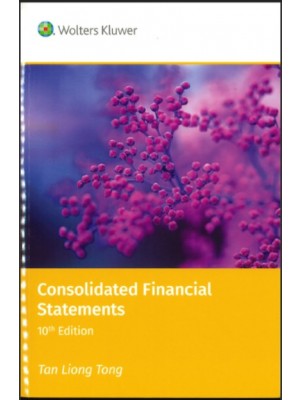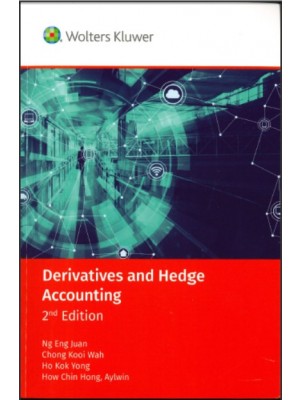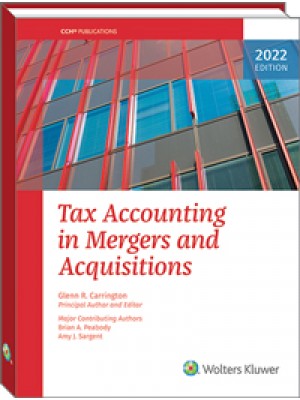List of Figures xxi
List of Tables xxv
Introduction 1
0.1 What Is This Book? 1
0.2 Special Features in This Book 1
0.3 Who Is This Book for and What Do You Learn? 2
0.4 Structure of This Book 2
0.5 C# Source Code 3
1 Global Overview of the Book 5
1.1 Introduction and Objectives 5
1.2 Comparing C# and C++ 5
1.3 Using This Book 6
2 C# Fundamentals 9
2.1 Introduction and Objectives 9
2.2 Background to C# 9
2.3 Value Types, Reference Types and Memory Management 10
2.4 Built-in Data Types in C# 10
2.5 Character and String Types 12
2.6 Operators 13
2.7 Console Input and Output 14
2.8 User-defined Structs 15
2.9 Mini Application: Option Pricing 16
2.10 Summary and Conclusions 21
2.11 Exercises and Projects 22
3 Classes in C# 25
3.1 Introduction and Objectives 25
3.2 The Structure of a Class: Methods and Data 25
3.3 The Keyword ‘this’ 28
3.4 Properties 28
3.5 Class Variables and Class Methods 30
3.6 Creating and Using Objects in C# 33
3.7 Example: European Option Price and Sensitivities 33
3.8 Enumeration Types 40
3.9 Extension Methods 42
3.10 An Introduction to Inheritance in C# 44
3.11 Example: Two-factor Payoff Hierarchies and Interfaces 46
3.12 Exception Handling 50
3.13 Summary and Conclusions 50
3.14 Exercises and Projects 51
4 Classes and C# Advanced Features 53
4.1 Introduction and Objectives 53
4.2 Interfaces 53
4.3 Using Interfaces: Vasicek and Cox-Ingersoll-Ross (CIR) Bond and Option Pricing 54
4.4 Interfaces in .NET and Some Advanced Features 61
4.5 Combining Interfaces, Inheritance and Composition 67
4.6 Introduction to Delegates and Lambda Functions 72
4.7 Lambda Functions and Anonymous Methods 76
4.8 Other Features in C# 77
4.9 Advanced .NET Delegates 80
4.10 The Standard Event Pattern in .NET and the Observer Pattern 87
4.11 Summary and Conclusions 91
4.12 Exercises and Projects 92
5 Data Structures and Collections 97
5.1 Introduction and Objectives 97
5.2 Arrays 97
5.3 Dates, Times and Time Zones 101
5.4 Enumeration and Iterators 105
5.5 Object-based Collections and Standard Collection Interfaces 107
5.6 The List Class 109
5.7 The Hashtable Class 110
5.8 The Dictionary<Key, Value> Class 111
5.9 The HashSet Classes 112
5.10 BitArray: Dynamically Sized Boolean Lists 114
5.11 Other Data Structures 114
5.12 Strings and StringBuilder 117
5.13 Some new Features in .NET 4.0 120
5.14 Summary and Conclusions 123
5.15 Exercises and Projects 123
6 Creating User-defined Data Structures 125
6.1 Introduction and Objectives 125
6.2 Design Rationale and General Guidelines 125
6.3 Arrays and Matrices 131
6.4 Vectors and Numeric Matrices 135
6.5 Higher-dimensional Structures 139
6.6 Sets 140
6.7 Associative Arrays and Matrices 142
6.8 Standardisation: Interfaces and Constraints 145
6.9 Using Associative Arrays and Matrices to Model Lookup Tables 152
6.10 Tuples 155
6.11 Summary and Conclusions 156
6.12 Exercises and Projects 156
7 An Introduction to Bonds and Bond Pricing 159
7.1 Introduction and Objectives 159
7.2 Embedded Optionality 160
7.3 The Time Value of Money: Fundamentals 160
7.4 Measuring Yield 166
7.5 Macauley Duration and Convexity 167
7.6 Dates and Date Schedulers for Fixed Income Applications 168
7.7 Exporting Schedulers to Excel 176
7.8 Other Examples 177
7.9 Pricing Bonds: An Extended Design 178
7.10 Summary and Conclusions 181
7.11 Exercises and Projects 181
8 Data Management and Data Lifecycle 185
8.1 Introduction and Objectives 185
8.2 Data Lifecycle in Trading Applications 185
8.3 An Introduction to Streams and I/O 186
8.4 File and Directory Classes 195
8.5 Serialisation Engines in .NET 199
8.6 The Binary Serialiser 203
8.7 XML Serialisation 204
8.8 Data Lifetime Management in Financial and Trading Applications 209
8.9 Summary and Conclusions 213
8.10 Exercises and Projects 213
9 Binomial Method, Design Patterns and Excel Output 215
9.1 Introduction and Objectives 215
9.2 Design of Binomial Method 216
9.3 Design Patterns and Classes 217
9.4 Early Exercise Features 232
9.5 Computing Hedge Sensitivities 233
9.6 Multi-dimensional Binomial Method 233
9.7 Improving Performance Using Pad´e Rational Approximants 236
9.8 Summary and Conclusions 238
9.9 Projects and Exercises 238
10 Advanced Lattices and Finite Difference Methods 241
10.1 Introduction and Objectives 241
10.2 Trinomial Model of the Asset Price and Its C# Implementation 241
10.3 Stability and Convergence of the Trinomial Method 246
10.4 The Black-Scholes Partial Differential Equation and Explicit Schemes 246
10.5 Implementing Explicit Schemes in C# 247
10.6 Stability of the Explicit Finite Difference Scheme 252
10.7 An Introduction to the Alternating Direction Explicit Method (ADE) 255
10.8 Implementing ADE for the Black-Scholes PDE 258
10.9 Testing the ADE Method 262
10.10 Advantages of the ADE Method 263
10.11 Summary and Conclusions 263
10.12 Appendix: ADE Numerical Experiments 263
10.13 Exercises and Projects 268
11 Interoperability: Namespaces, Assemblies and C++/CLI 271
11.1 Introduction and Objectives 271
11.2 Namespaces 271
11.3 An Introduction to Assemblies 273
11.4 Reflection and Metadata 276
11.5 C# and Native C++ Interoperability: How Is That Possible? 289
11.6 Using C# from C++ 293
11.7 Code Generation Using the Reflection API 298
11.8 Application Domains 304
11.9 Summary and Conclusions 309
11.10 Exercises and Projects 309
12 Bond Pricing: Design, Implementation and Excel Interfacing 311
12.1 Introduction and Objectives 311
12.2 High-level Design of Bond Pricing Problem 311
12.3 Bond Scheduling 312
12.4 Bond Functionality and Class Hierarchies 313
12.5 Calculating Price, Yield and Discount Factors: MathTools 317
12.6 Data Presentation and Excel Interop 319
12.7 Bond Data Management 321
12.8 Using the Excel Files 324
12.9 Summary and Conclusions 328
12.10 Exercises and Projects 328
13 Interpolation Methods in Interest Rate Applications 335
13.1 Introduction and Objectives 335
13.2 Interpolation and Curve Building: Basic Formula for Interpolator Tests 335
13.3 Types of Curve Shape 337
13.4 An Overview of Interpolators 338
13.5 Background to Interpolation 339
13.6 Approximation of Function Derivatives 341
13.7 Linear and Cubic Spline Interpolation 342
13.8 Positivity-preserving Cubic Interpolations: Dougherty/Hyman and Hussein 344
13.9 The Akima Method 348
13.10 Hagan-West Approach 349
13.11 Global Interpolation 350
13.12 Bilinear Interpolation 352
13.13 Some General Guidelines, Hints and Tips 355
13.14 Using the Interpolators and Test Examples 357
13.15 Summary and Conclusions 367
13.16 Exercises and Projects 367
14 Short Term Interest Rate (STIR) Futures and Options 369
14.1 Introduction and Objectives 369
14.2 An Overview of Cash Money Markets 370
14.3 Sources of Risk in Money Market Transactions 370
14.4 Reference Rate and Fixings 371
14.5 STIR Futures 371
14.6 Pricing STIR Options 374
14.7 Generating International Monetary Market (IMM) Dates 378
14.8 List STIR Futures and STIR Futures Options 384
14.9 Putting It All Together: STIR versus OTC from a Trader’s Perspective 387
14.10 Summary and Conclusions 389
14.11 Exercises and Projects 389
15 Single-curve Building 393
15.1 Introduction and Objectives 393
15.2 Starting Definitions and Overview of Curve Building Process 393
15.3 Building Blocks 395
15.4 Introduction to Interest Rate Swap 397
15.5 The Curve Construction Mechanism 403
15.6 Code Design and Implementation 406
15.7 Console Examples 418
15.8 Summary and Conclusions 426
15.9 Exercises and Projects 427
15.10 Appendix: Types of Swaps 429
16 Multi-curve Building 431
16.1 Introduction and Objectives 431
16.2 The Consequences of the Crisis on Interest Rate Derivatives Valuation 431
16.3 Impact of Using OIS Discounting 436
16.4 The Bootstrapping Process Using Two Curves: Description of the Mechanism 437
16.5 Sensitivities 438
16.6 How to Organise the Code: A Possible Solution 439
16.7 Putting it Together, Working Examples 445
16.8 Summary and Conclusions 453
16.9 Exercises and Projects 453
16.10 Appendix: Par Asset Swap Spread and Zero Volatility Spread 455
17 Swaption, Cap and Floor 459
17.1 Introduction and Objectives: A Closed Formula World 459
17.2 Description of Instruments and Formulae 459
17.3 Multi-curve Framework on Cap, Floor and Swaption 467
17.4 Bootstrapping Volatility for Cap and Floor 469
17.5 How to Organise the Code in C#: A Possible Solution 474
17.6 Console and Excel Working Examples 481
17.7 Summary and Conclusions 490
17.8 Exercise and Discussion 491
18 Software Architectures and Patterns for Pricing Applications 493
18.1 Introduction and Objectives 493
18.2 An Overview of the GOF Pattern 494
18.3 Creational Patterns 496
18.4 Builder Pattern 496
18.5 Structural Patterns 499
18.6 Behavioural Patterns 500
18.7 Builder Application Example: Calibration Algorithms for Cap and Floor 502
18.8 A PDE/FDM Patterns-based Framework for Equity Options 504
18.9 Using Delegates to Implement Behavioural Design Patterns 509
18.10 A System Design for Monte Carlo Applications 510
18.11 Dynamic Programming in .NET 513
18.12 Summary and Conclusions 516
18.13 Exercises and Projects 517
19 LINQ (Language Integrated Query) and Fixed Income Applications 523
19.1 Introduction and Objectives 523
19.2 Scope of Chapter and Prerequisites 523
19.3 LINQ Query Operators 524
19.4 LINQ Queries and Initial Examples 526
19.5 Advanced Queries 531
19.6 A Numerical Example 533
19.7 Join and GroupJoin 535
19.8 Examples in Fixed Income Applications 540
19.9 LINQ and Excel Interoperability 549
19.10 Summary and Conclusions 557
19.11 Exercises and Projects 557
20 Introduction to C# and Excel Integration 561
20.1 Introduction and Objectives 561
20.2 Excel Object Model 561
20.3 Using COM Technology in .NET 561
20.4 Primary Interop Assemblies (PIA) 563
20.5 Standalone Applications 564
20.6 Types of Excel Add-ins 566
20.7 The IDTExtensibility2 Interface and COM/.NET Interoperability 569
20.8 Data Visualisation in Excel 570
20.9 Conclusion and Summary 578
20.10 Exercises and Projects 579
21 Excel Automation Add-ins 581
21.1 Introduction and Objectives 581
21.2 COM Overview 581
21.3 Creating Automation Add-ins: The Steps 583
21.4 Example: Creating a Calculator, Version 1 585
21.5 Example: Creating a Calculator, Version 2 588
21.6 Versioning 590
21.7 Working with Ranges 590
21.8 Volatile Methods 590
21.9 Optional Parameters 591
21.10 Using VBA with Automation Add-ins 592
21.11 Summary and Conclusions 593
21.12 Exercises and Projects 594
22 C# and Excel Integration COM Add-ins 595
22.1 Introduction and Objectives 595
22.2 Preparations for COM Add-ins 595
22.3 The Interface IDTExtensibility2 596
22.4 Creating COM Add-ins: The Steps 596
22.5 Utility Code and Classes 597
22.6 Using Windows Forms 600
22.7 Example: Creating a COM Add-in 601
22.8 Debugging and Troubleshooting 603
22.9 An Introduction to Excel-DNA 603
22.10 Excel COM Interoperability and Rate Multi-curve 615
22.11 Conclusion and Summary 622
22.12 Exercises and Projects 622
23 Real-time Data (RTD) Server 625
23.1 Introduction and Objectives 625
23.2 Real-time Data in Excel: Overview 625
23.3 Real-time Data Function 626
23.4 Example 627
23.5 The Topic Class and Data 629
23.6 Creating an RTD Server 631
23.7 Using the RTD Server 631
23.8 Testing and Troubleshooting the RTD Server 632
23.9 Conclusion and Summary 632
23.10 Exercises and Projects 632
24 Introduction to Multi-threading in C# 635
24.1 Introduction and Objectives 635
24.2 Processes 636
24.3 Using ProcessStartInfo to Redirect Process I/O 637
24.4 An Introduction to Threads in C# 638
24.5 Passing Data to a Thread and between Threads 641
24.6 Thread States and Thread Lifecycle 644
24.7 Thread Priority 650
24.8 Thread Pooling 651
24.9 Atomic Operations and the Interlocked Class 652
24.10 Exception Handling 653
24.11 Multi-threaded Data Structures 654
24.12 A Simple Example of Traditional Multi-threading 659
24.13 Summary and Conclusions 661
24.14 Exercises and Projects 661
25 Advanced Multi-threading in C# 665
25.1 Introduction and Objectives 665
25.2 Thread Safety 666
25.3 Locking Mechanisms for Objects and Classes 667
25.4 Mutex and Semaphore 673
25.5 Notification and Signalling 676
25.6 Asynchronous Delegates 679
25.7 Synchronising Collections 681
25.8 Timers 682
25.9 Foreground and Background Threads 684
25.10 Executing Operations on Separate Threads: the BackgroundWorker Class 685
25.11 Parallel Programming in .NET 687
25.12 Task Parallel Library (TPL) 691
25.13 Concurrent Data Structures 694
25.14 Exception Handling 701
25.15 Shifting Curves 702
25.16 Summary and Conclusions 704
25.17 Exercises and Projects 704
26 Creating Multi-threaded and Parallel Applications for Computational Finance 707
26.1 Introduction and Objectives 707
26.2 Multi-threaded and Parallel Applications for Computational Finance 707
26.3 Fork and Join Pattern 709
26.4 Geometric Decomposition 711
26.5 Shared Data and Reader/Writer Locks: Multiple Readers and Multiple Writers 715
26.6 Monte Carlo Option Pricing and the Producer–Consumer Pattern 719
26.7 The StopWatch Class 726
26.8 Garbage Collection and Disposal 727
26.9 Summary and Conclusions 730
26.10 Exercises and Projects 730
A1 Object-oriented Fundamentals 735
A2 Nonlinear Least-squares Minimisation 751
A3 The Mathematical Background to the Alternating Direction Explicit (ADE) Method 765
A4 Cap, Floor and Swaption Using Excel-DNA 789
Bibliography 805
Web References 812
Index 815

































